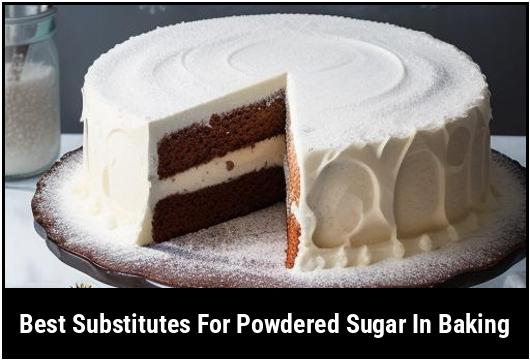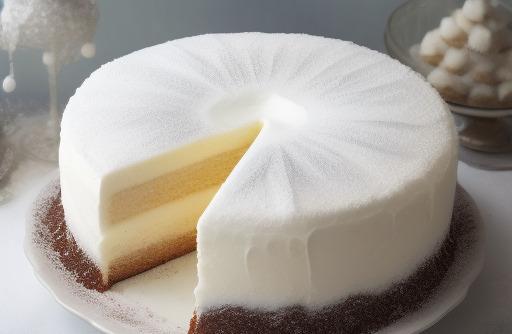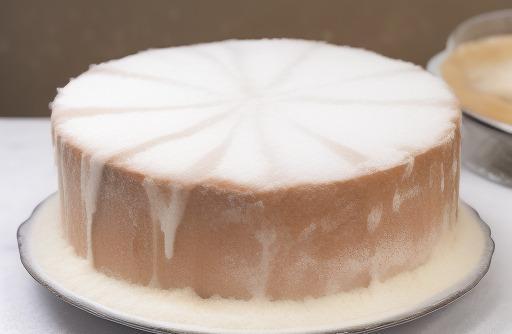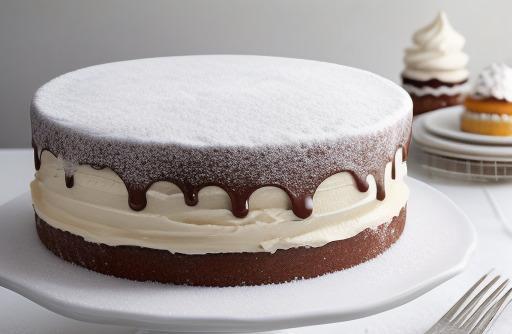Best Substitutes For Powdered Sugar In Baking

Powdered sugar, also known as confectioners’ sugar or icing sugar, is widely used in baking to add sweetness, texture, and decoration to various desserts. It is a fine, powdery sugar that easily dissolves and blends into recipes, making it ideal for frosting, glazes, and dusting. However, there are times when you may find yourself without powdered sugar or in need of a healthier alternative. In this article, we will explore the best substitutes for powdered sugar in baking, their uses, and how to choose the right substitute for your recipe.
Key Takeaways
- Powdered sugar is commonly used in baking for its ability to dissolve quickly and provide a smooth texture.
- There are several substitutes for powdered sugar, including granulated sugar, sugar-free alternatives, and homemade options.
- The choice of substitute depends on your dietary restrictions, preferences, and the desired outcome of your recipe.
- Some substitutes may alter the taste, texture, or appearance of your baked goods, so it’s important to choose wisely.
Why You Need A Substitute For Powdered Sugar In Baking
There are several reasons why you may need a substitute for powdered sugar in baking. Here are a few common scenarios:
- Limited supply: You may find yourself in a situation where you don’t have powdered sugar on hand, and it’s not convenient or possible to go out and buy some.
- Health concerns: Powdered sugar is high in calories and carbohydrates, making it a no-go for those on a restricted diet or managing conditions such as diabetes.
- Allergies or dietary restrictions: If you or someone you’re baking for has allergies or dietary restrictions, such as being lactose intolerant or vegan, you may need an alternative to powdered sugar that fits their needs.
- Texture preferences: Depending on the texture you want to achieve in your baked goods, using a substitute for powdered sugar can provide different results.
With these reasons in mind, let’s dive into the various types of substitutes for powdered sugar in baking.
Types Of Substitutes For Powdered Sugar In Baking

When it comes to substituting powdered sugar in your recipes, you have several options to choose from. Here are the most common types of substitutes:
- Granulated Sugar: Granulated sugar can be easily transformed into powdered sugar with the help of a blender or food processor. This substitute maintains sweetness but lacks the fine texture of powdered sugar.
- Stevia or Other Sugar-Free Alternatives: For those looking to reduce calories or avoid sugar altogether, sugar-free alternatives like stevia can be used. However, note that the texture and taste may differ from traditional powdered sugar.
- Cornstarch and Granulated Sugar Mixture: Adding cornstarch to granulated sugar helps mimic the texture of powdered sugar. This substitute is great for dusting desserts or creating a smoother frosting.
- Homemade Powdered Sugar: You can make your own powdered sugar by grinding granulated sugar with a small amount of cornstarch. This homemade version is similar in texture to store-bought powdered sugar.
- Mashed Banana: Mashed bananas can be used as a natural substitute for powdered sugar in certain recipes, such as banana bread or muffins. The sweetness and moisture from the bananas can replace the need for powdered sugar.
Each of these substitutes has its own unique properties, so let’s explore the best substitutes for powdered sugar in baking and when to use them.
Best Substitutes For Powdered Sugar In Baking

-
Granulated Sugar
- Granulated sugar is the closest alternative to powdered sugar in terms of sweetness. However, it has a coarser texture, so it may not dissolve as easily or provide the same smoothness in frostings or glazes.
- To substitute powdered sugar with granulated sugar, blend 1 cup of granulated sugar until it reaches a fine, powdery consistency in a blender or food processor. This homemade powdered sugar can be used as a one-to-one replacement.
- Pro Tip: When substituting granulated sugar for powdered sugar in frosting or glazes, be sure to sift the homemade powdered sugar to remove any larger granules, as they can affect the texture.
-
Stevia or Other Sugar-Free Alternatives
- Stevia is a natural, calorie-free sweetener that can be used as a sugar substitute in baking. While it doesn’t provide the same texture as powdered sugar, it can still add sweetness to your recipes without the added calories or carbohydrates.
- When using stevia or other sugar-free alternatives instead of powdered sugar, it is important to follow the manufacturer’s instructions for substitution ratios, as they can vary depending on the brand and concentration of the product.
-
Cornstarch and Granulated Sugar Mixture
- A combination of cornstarch and granulated sugar can create a substitute for powdered sugar with a similar texture. This mixture is perfect for dusting desserts or making smoother frostings and glazes.
- To create this substitute, combine 1 cup of granulated sugar and 1 tablespoon of cornstarch in a blender or food processor. Blend until the mixture reaches a powdery consistency.
- Pro Tip: Sift the cornstarch and sugar mixture before using it to ensure a smooth texture and to remove any lumps.
-
Homemade Powdered Sugar
- Making your own powdered sugar is simple and allows you to control the texture and sweetness according to your preferences. To create homemade powdered sugar, combine 1 cup of granulated sugar with 1 tablespoon of cornstarch.
- Using a blender or food processor, blend the mixture until it resembles the texture of powdered sugar. Store the homemade powdered sugar in an airtight container and use it as a one-to-one replacement for store-bought powdered sugar.
-
Mashed Banana
- Mashed bananas are an excellent substitute for powdered sugar in recipes that require moistness and sweetness, such as banana bread or muffins. The natural sugars in the bananas provide sweetness and moisture to the baked goods.
- To substitute powdered sugar with mashed banana, replace 1 cup of powdered sugar with 1 cup of mashed bananas. Keep in mind that using mashed banana may affect the overall taste and texture of your recipe.
Now that you are familiar with the best substitutes for powdered sugar in baking, it’s important to choose the right substitute based on your recipe.
Choosing The Right Substitute For Powdered Sugar In Baking

When selecting a substitute for powdered sugar, consider the following factors:
- Taste: Think about how the substitute will affect the overall taste of your baked goods. Granulated sugar, stevia, and homemade powdered sugar will generally maintain the sweetness level, but each may have a slightly different flavor profile.
- Texture: Consider the texture you want to achieve. If a smooth, velvety texture is important, using granulated sugar alone may not yield the desired result. In such cases, a cornstarch and sugar mixture or homemade powdered sugar might be a better choice.
- Moisture: If the recipe calls for the moisture that powdered sugar provides, such as in certain frostings, using mashed banana as a substitute can add moisture and natural sweetness.
- Health Considerations: If you are watching your calorie intake or have dietary restrictions, sugar-free alternatives like stevia can be a suitable choice. However, be aware that they may not provide the same taste or texture as powdered sugar.
Consider the specific requirements of your recipe and the desired outcome when choosing a substitute for powdered sugar. Experimenting with different substitutes can help you discover new flavors and textures in your baked goods.
Cooking With Substitutes For Powdered Sugar In Baking

When cooking with substitutes for powdered sugar, there are a few things to keep in mind to ensure the best results:
- Substitution Ratios: Make sure to follow the substitution ratios provided for each substitute. Using too much or too little can affect the taste, texture, and overall outcome of your baked goods.
- Texture Adjustment: If your recipe requires the smooth texture that powdered sugar provides, consider sifting the substitute to remove any larger particles and create a finer texture.
- Taste Testing: Before committing to the substitute, taste test the recipe as you go along to ensure the flavor is to your liking. Adjust the sweetness or other flavors if necessary.
- Recipe Adaptation: Be aware that some substitutes, like mashed banana, may alter the taste and texture of the final baked goods. Adjusting other ingredients and techniques may be necessary to compensate for these changes.
Remember, cooking is a creative process, and experimenting with different substitutes can lead to unique and delicious results. Embrace the opportunity to try new flavors and textures in your baked goods.
Recipes Using Substitutes For Powdered Sugar In Baking
Here are a couple of recipes that showcase the use of substitutes for powdered sugar:
Recipe 1: Homemade Chocolate Frosting
Ingredients:
- 1 cup unsalted butter, softened
- 2 cups homemade powdered sugar
- 1/4 cup cocoa powder
- 2 tablespoons milk
Instructions:
- In a mixing bowl, cream the softened butter until smooth and fluffy.
- Gradually add the homemade powdered sugar and cocoa powder, mixing well after each addition.
- Pour in the milk and continue to mix until the frosting reaches a creamy consistency.
- Taste test the frosting and adjust the sweetness if needed by adding more powdered sugar or cocoa powder.
- Use the frosting to frost your favorite cake or cupcakes.
Recipe 2: Sugar-Free Lemon Bars
Ingredients:
- 1 1/2 cups almond flour
- 1/2 cup sugar-free sweetener (stevia or erythritol)
- 1/2 cup butter, melted
- 4 large eggs
- 1/2 cup lemon juice
- 1 tablespoon lemon zest
Instructions:
- Preheat the oven to 350°F (175°C) and grease a baking dish.
- In a bowl, combine the almond flour, sugar-free sweetener, and melted butter. Press the mixture into the bottom of the baking dish to form the crust.
- In a separate bowl, whisk together the eggs, lemon juice, and lemon zest until well combined.
- Pour the lemon mixture over the crust and spread it evenly.
- Bake for 25-30 minutes, or until the edges are golden and the center is set.
- Allow the lemon bars to cool completely before cutting into squares and serving.
These recipes highlight the versatility of substitutes for powdered sugar in baking. Give them a try and explore your creativity in the kitchen.
Storage And Shelf Life Of Substitutes
The storage and shelf life of substitutes for powdered sugar vary depending on the type of substitute:
- Granulated Sugar: Store granulated sugar in an airtight container in a cool, dry place. It can last indefinitely if stored properly.
- Stevia or Sugar-Free Alternatives: Follow the manufacturer’s instructions for storage and shelf life. Typically, sugar-free alternatives have a longer shelf life when stored in a cool, dry place.
- Cornstarch and Granulated Sugar Mixture: Store the cornstarch and sugar mixture in an airtight container in a cool, dry place. It can last for several months.
- Homemade Powdered Sugar: Store homemade powdered sugar in an airtight container in a cool, dry place. It can last for several months.
- Mashed Banana: Use mashed banana substitutes immediately or within a day. They do not have a long shelf life once they have been mashed.
Ensure that all substitutes are stored properly to maintain their quality and freshness over time.
Conclusion
Having a substitute for powdered sugar in baking is useful in various scenarios, whether due to limited supply, health concerns, allergies, or personal preferences. By exploring the best substitutes for powdered sugar, including granulated sugar, sugar-free alternatives, cornstarch and sugar mixtures, homemade powdered sugar, and mashed banana, you can adapt your recipes to meet your specific needs and achieve desirable results. Remember to consider taste, texture, and dietary requirements when choosing a substitute and experiment with different substitutes to discover new flavors and textures in your baked goods. Happy baking!
FAQS
What Are Some Good Substitutes For Powdered Sugar In Baking?
There are several substitutes you can use in place of powdered sugar, depending on the recipe. Some options include honey, maple syrup, agave nectar, stevia, and coconut sugar. Each of these alternatives has a unique taste and consistency, so it’s important to choose the right one for your recipe.
Can I Use Regular Granulated Sugar Instead Of Powdered Sugar In Baking?
It’s possible to use regular granulated sugar in certain recipes, but the texture and consistency of the finished product may be different than if you used powdered sugar. In general, powdered sugar is best for recipes that require a smooth and light texture, such as frosting or icing.
Are There Any Health Benefits To Using Alternative Sweeteners Instead Of Powdered Sugar In Baking?
Some alternative sweeteners, such as honey and maple syrup, contain natural antioxidants and other beneficial compounds. However, it’s important to remember that these sweeteners are still high in calories and should be used in moderation.
How Do I Substitute Powdered Sugar With Honey Or Maple Syrup In Baking Recipes?
In most cases, you can substitute honey or maple syrup for powdered sugar by using a 1:1 ratio. However, you may need to adjust the other ingredients in the recipe to accommodate for the change in consistency and sweetness.
Is It Possible To Make My Own Powdered Sugar Substitute At Home?
Yes, you can make your own powdered sugar substitute by blending granulated sugar in a food processor or blender until it reaches a fine, powdery consistency. You can also mix granulated sugar with cornstarch to achieve a similar texture.
Sources
About the Author Jenny
I'm Jenny, a housewife with an unwavering passion for food. My culinary journey began with my grandmother's kitchen, and it's now a full-fledged food blog. I've turned my love for cooking into a creative outlet, sharing recipes and stories with a global community of fellow food enthusiasts. It's proof that being a housewife can also mean pursuing your passions and savoring life's delectable moments.
